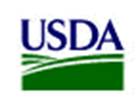Following the workshop presentations, the group discussed research and outreach needs, identifying projects within each of eight focal areas. Once this comprehensive list (115 projects / needs) had been developed, workshop participants were asked to vote for their top three in each focal area. The following are the top five needs identified in each focal area (more than five if projects tied for fifth place).
Focus 1. Detection of Angiostrongylus cantonensis in intermediate / environmental / definitive hosts
- Genomics / proteomics: sequence genome / develop proteomics for fast detection
- Obtain comparative data on sensitivity and specificity of available techniques
- Develop methods of parasite detection in fresh human food mainly vegetables and fruits
- Sample other potential hosts, notably flatworms, to assess their potential as hosts and their parasite load
- Develop ‘low tech’ detection methods
- Gain a better understand of the biology of the hosts
Focus 2. Control of hosts in the field (rats, slugs/snails, paratenic hosts)
- Identify paratenic hosts, their relevance and importance
- Gain a better understanding of the basic biology of snails and slugs, including genetics, which could be useful in trying to develop interventions
- Undertake surveys of rats in areas where A. cantonensis has been reported (e.g. south Florida, Rota)
- Develop cultural methods of snail/slug control, such as natural barriers (e.g. sand)
- Gain a better understanding of the environmental variables that affect slug and snail host survival and reproduction, e.g. humidity, temperature, etc., and the potential effects of climate change / global warming
Focus 3. Public education to minimize chance of infection
- Involve children (ages 7-14) in educational efforts and build education about angiostrongyliasis into science/math (STEM) curriculum (in the U.S. there may be an NSF GK-12 grant opportunity)
- Require continuing education for health care practitioners
- Better define risk factors so that these can be the focus of education
- Increase outreach to farmers and farmers’ markets. Focus on potential impact on profits
- Involve social media networks, e.g. Myspace, Facebook, etc., and contribute regularly
- Define public health messages clearly and consistently
- Create an angiostrongyliasis listserve
Focus 4. Control of hosts / larvae on produce (e.g. washing / rinsing)
- Evaluate different rinse ingredients
- In the U.S., obtain EPA and/or FDA approval of methods for washing produce, and similarly in Hawaii get approval from the Departments of Agriculture and Health, as well as other regulatory agencies
- Undertake surveys to ascertain the distribution of larvae and hosts, including slugs/snails on different kinds of fresh produce
- Develop a hand held LAMP (loop-mediated isothermal amplification) devise or other simple methods for detection of A. cantonensis in the field
- Investigate irradiation of produce as a sanitizing method
Focus 5. Diagnosis
- Improve and standardize serology
- Develop rapid tests for detection, e.g. PCR, antigen detection, chromatography, ‘dipsticks’
- Standardize clinical criteria for diagnosis
- Validate PCR detection of A. cantonensis in patients
- Develop a cooperative network for sharing specimens, antigens and DNA sequences
Focus 6. Treatment
- Undertake well thought-out clinical trials
- Assess the value of early use of antihelminthics
- Standardize the protocol for lumbar puncture (LP), e.g. are serial/repeat LPs beneficial; how often should they be done?
- Develop guidelines for the use of steroid therapy, e.g. when to start, dosage, rate of tapering off
- Determine what should be the standard of care?
Focus 7. Pathophysiology
- Determine the actual mechanism of neurological injury in humans: (i) increased intra-cranial pressure, (ii) the inflammatory reaction, and if so which cytokines are involved, (iii) mechanical damage from worm migration, or (iv) a combination of these
- Develop the best animal model for the disease
- Assess the influence of parasite inoculum on incubation period and severity of the illness, in particular how the number of parasites in the inoculum correlates with the number of parasites reaching the brain
- Determine how the parasites invade the central nervous system (CNS)
- Determine at which larval stage intervention (helminthicides) will prevent symptoms
- Investigate pathophysiology in infected hosts (slugs/snails, rat, paratenic hosts)
- Investigate the mechanism by which steroid treatment alleviates symptoms: inflamation reduction or reduction of intra-cranial pressure
Focus 8. Epidemiology
- Refine understanding of risk factors
- Develop better tools for molecular epidemiology
- Standardize the methodology of environmental assessments in terms of location characteristics and the geographical distribution of the parasite and the disease in a region
- Develop centralized reporting of epidemiological findings
- Determine the relationship between infection and disease: what triggers the disease, how the level of exposure is related to incidence of the disease
This page last updated 23 September 2011 |






